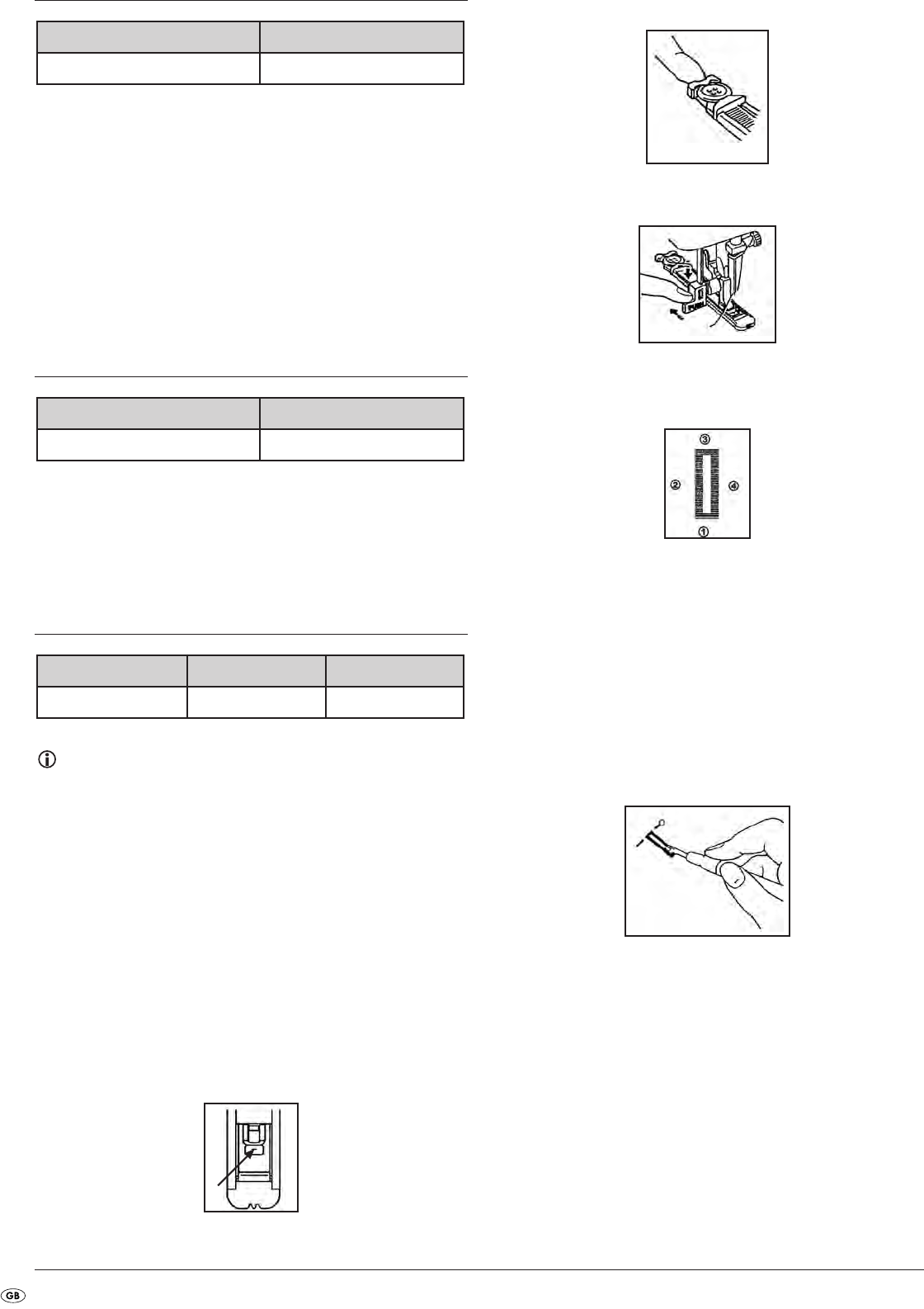
- 12 -
Sewing material edges with feather stitch
Use the feather stitch as a decorative border stitch or to hem bed covers,
table cloths and curtains or even for embroidery work.
1. Set the stitch type selector
w
at 17.
2. Position the fabric with the good side up on the sewing table of
the machine and sew the seam ca. 1 cm (3/8”) from and parallel
to the edge.
3. Trim the fabric close to the seam along the edge.
Besides this, the decorative effect of the feather stitch also prevents the
fabric edge from fraying.
Sewing with three-fold zigzag stretch stitches
This type of stitch can be used to sew heavy stretch materials whenever a
stitch with zigzag pattern is practical. It may also be used as a decorative
edge stitch.
• Set the stitch type selector
w
at 20.
Sewing buttonholes
Notice
1. It is advisable to practice the sewing of buttonholes on a remnant
of material before you actually attempt this on a garment.
2. If you want to sew buttonholes in soft and yielding materials,
it is adviseable to line the fabric with a stabilising material.
With appropriate practice and suitable settings of the machine, the automa-
tic production of buttonholes in one working process is a simple method
that delivers reliable results.
1. Mark the position of the buttonhole on the material with tailors chalk.
2. Attach the buttonhole sewing foot
N
(see Chapter „Changing the
sewing foot”) and set the stitch type selector
w
at 1.
3. Retrieve the lower thread.
4. Lower the sewing foot, so that the markings on the buttonhole foot
N
align with the chalk markings on the material as shown in the follo-
wing diagram. The front closure of the buttonhole is sewn first.
Type of stitch No. Stitch length/mm Sewing foot
1 (Buttonhole stitch) F-1.5 Buttonhole foot
Type of stitch No. Stitch length
20 (Triple zigzag stretch stitch) fixed at 2.5 in the factory
Type of stitch No. Stitch length
17 (Feather stitch) fixed at 2.5 in the factory
5. Open the caliper on the buttonhole foot
N
and position the button
to be sewn on between the jaws.
6. Pull the buttonhole lever
d
down and press it backwards slightly
as shown.
7. Start the machine, at the same time holding the upper thread carefully.
8. Automatic production of the buttonhole takes place in the sequence of
the steps 1 to 4 displayed in the diagram below.
9. Stop the machine when the two side buttonhole seams and the two
finishings of the buttonhole have been completed.
Securing the edges and cutting the buttonhole
1. To secure the edging of the buttonhole, raise the sewing foot
s
and
turn the material through 90° in an anti-clockwise direction on the
sewing table and then lower the buttonhole foot
N
once again.
Now sew in straight stitch (Stitch type No. 3) until you have completed
the front fastening of the buttonhole.
2. Remove the material you have sewn from the machine. It is advisable
to insert pins diagonally at both ends of a buttonhole to hinder a sepa-
ration of the stitches.
3. With the thread cutter
J
cut out the buttonhole, slicing through the
material in the centre between the two buttonhole seams. Proceed
carefully in order to avoid cutting the stitches themselves.
IB_KH4001_E2719_GB_LB4 23.04.2008 9:28 Uhr Seite 12


















